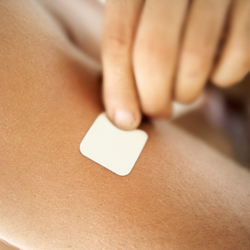Improving skin patch drug delivery
TDD systems, commonly called patches, deliver the therapeutic agent at a controlled rate through the skin to the systemic circulation and to the target organs. An advantage of TDD over other types of medication delivery is that the patch provides a controlled release of the medication. Usually, this happens through either a porous membrane covering a reservoir of medication or through body heat melting thin layers of medication embedded in the adhesive. The most relevant adverse effects of transdermal therapy are skin irritation effects due to the presence of adhesives. Another disadvantage of a TDD system is its high cost due to the use of synthetic polymer. The EU-financed BIOTRANSOS project focused on development of a simple TDD system of a mono-layer structure that includes the backing, adhesive and drug reservoir functions. To prevent skin irritation it had to be easily removable from the skin after use. The objective was to design and evaluate the device, which contains a biocompatible matrix with hydrogel properties and with advanced stimuli responsiveness for substance release. First, researchers studied the preparation and characterisation of polymers for the best film-forming and mechanical properties. They found that chitosan-based films presented the best characteristics. Then they tried to enhance skin adhesion properties by adding either commercial pressure sensitive polymer or polyacrylic acid. Adhesives properties were analysed with a tack test. The hydrophobic coating for the chitosan film was based on fatty acid, and barrier properties with and without coatings were compared with a commercial patch. The switch mechanism for drug release on the surface of the loaded matrix was achieved by grafting a thermo-responsive polymer (PNiPAAm) into the film. Finally, in vitro drug release studies were done in order to determine the influence of the surface modification on release properties of the chitosan film. In vitro release kinetics were studied using two different methods from the films before and after surface modifications. The new transdermal patch could have application in treatment for osteoporosis. Research initiated by BIOTRANSOS has been continued and resulted in the development of two new projects on TDD systems in relation to skin disease treatment and surgery applications.
Keywords
Transdermal drug delivery, skin patch, chitosan, osteoporosis

